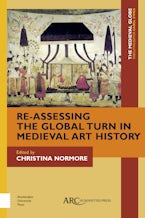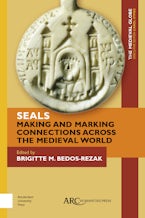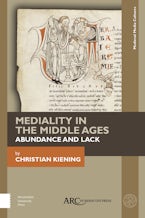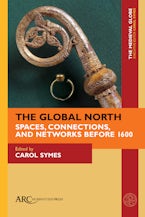- Home
- The Medieval Globe Books
- art
- Re-Assessing the Global Turn in Medieval Art History
Re-Assessing the Global Turn in Medieval Art History
Edited by Christina Normore
General editor Carol Symes
Series: The Medieval Globe Books
260 Pages, Trim size: 156 x 234 mm, Plate section at end of volume before the index
- Hardcover
- 9781641892261
- Published: May 2018
$135.00
£113.00
Study of the migration of motifs, materials, personnel, and finished objects in Eurasia has a long pedigree in medieval art history, and the broadening attention to material culture as an alternative to purely textually based historical accounts has been integral to reshaping the conception of an interconnected medieval world.
The growth in debates concerning the concept of "the global" throughout art history, and the more complex picture of Eurasian and African societies and material culture that has emerged in the past two decades has highlighted challenges to traditional art historical narratives, specializations, and scholarly training. And while these problems affect Byzantine, Islamic, Western medieval, and East Asian art history, there has been little conversation among scholars in these fields. A cutting-edge work on global medieval art, this volume offers a starting point for conversations among scholars working on multiple cultural regions.
Editor’s Introduction, by Christina Normore
A Camel’s Pace: A Cautionary Global, by Bonnie Cheng
The Fatimid Holy City: Rebuilding Jerusalem in the Eleventh Century, by Jennifer Pruitt
Worldliness in Byzantium and Beyond: Reassessing the Visual Networks of Barlaam and Ioasaph, by Cecily J. Hilsdale
Exchange of Sacrifices: West Africa in the Medieval World of Goods, by Sarah Guérin
The Beryozovo Cup: A Byzantine Object at the Crossroads of the Twelfth-Century Medieval World, by Alicia Walker
Spiritualized Warfare and Christian-Muslim Encounters in a Medieval Dagger, by Heather Badamo
Global Medieval at the 'End of the Silk Road', circa 756 CE: The Shōsō-in Collection in Japan, by Jun Hu
Response: Medievalists and Early Modernists: A World Divided?, by Lia Markey and Jessica Keating
A Camel’s Pace: A Cautionary Global, by Bonnie Cheng
The Fatimid Holy City: Rebuilding Jerusalem in the Eleventh Century, by Jennifer Pruitt
Worldliness in Byzantium and Beyond: Reassessing the Visual Networks of Barlaam and Ioasaph, by Cecily J. Hilsdale
Exchange of Sacrifices: West Africa in the Medieval World of Goods, by Sarah Guérin
The Beryozovo Cup: A Byzantine Object at the Crossroads of the Twelfth-Century Medieval World, by Alicia Walker
Spiritualized Warfare and Christian-Muslim Encounters in a Medieval Dagger, by Heather Badamo
Global Medieval at the 'End of the Silk Road', circa 756 CE: The Shōsō-in Collection in Japan, by Jun Hu
Response: Medievalists and Early Modernists: A World Divided?, by Lia Markey and Jessica Keating
Christina Normore is associate professor of art history at Northwestern University. She researches and teaches medieval art, with an emphasis on fourteenth-and fifteenth-century northwestern Europe.
Carol Symes is the Lynn M. Martin Professorial Scholar at the University of Illinois at Urbana-Champaign. Her research focuses on the history of documentary practices and communication media in medieval Europe.











